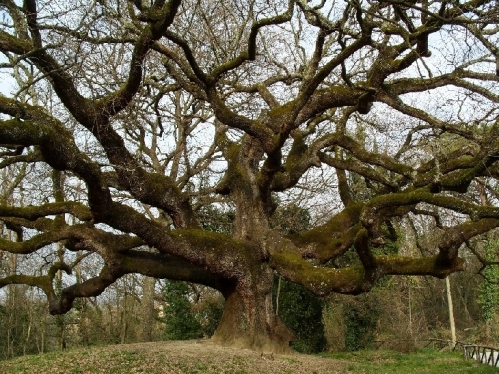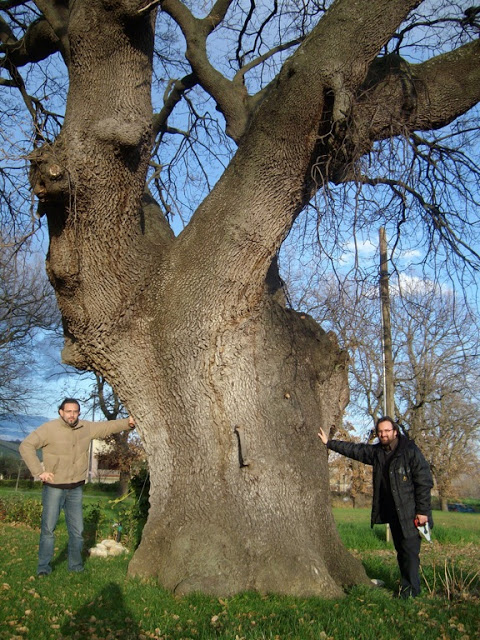
English Oak of the Witches or Pinocchio’s
This post is also available in:
 Italiano (Italian)
Italiano (Italian)
Quercus robur (Fagaceae)
There are two legends concerning this huge, centuries-old English oak (trunk circumference of 14.7 ft, the height of 78.7 ft, over 600 years old), both quite fascinating especially if you get to know about them while lying under its majestic crown.
According to the first legend, this great English oak used to be a meeting place for the witches, who performed rituals dancing among the branches. The shape of the flattened crown and its branches almost parallel to the ground have made that story extremely popular, which is why this tree is known as “the oak of the witches”.
The second legend is linked to the famous tale of Pinocchio by Carlo Collodi; this English oak would thus be exactly the one under which Pinocchio, on his way the Land of Toys, buries his gold coins, ill-advised by the Cat and the Fox. Allegedly, Carlo Collodi imagined his Land of Toys gathering inspiration from fairs and events which have always been organized in his hometown (Florence) and in Lucca, during the month of September. If so, however, the tree should stand between Florence and Lucca.
The beautiful English oak has been severely threatened more than once over the years; during the Second World War, the Germans tried to cut it to get firewood, while the immense foliage was used by the Nazis to hide their tanks. Even today, the tree is constantly spoiled by vandals who tear off its branches as if they were souvenirs, or uselessly carve its bark.
This monumental English oak is definitely worth a visit: only under its branches people can understand its greatness and legendary fame.
How to get there:
From the State Road 12 (Lucca-Montecatini-Pistoia), take a secondary road in Fontananuova. It will soon turn into a dirt track which leads to a clearing where the oak grows.
Botanical Card:
This species is distributed throughout most of Europe, reaching southern Scandinavia, the Caucasus, Italy, and the Douro river across northern-central Spain and Portugal.
In Italy, it’s quite abundant, but it doesn’t grow in, Campania, Puglia, Sicily, and Calabria Regions. Nonetheless, in the latter part of Italy, its total absence has not been confirmed yet.
The English oak is typical of lowland forests, often associated with other broad-leaved trees such as hornbeams, field elms, field maples, narrow-leafed ashes, and black alders.
Unfortunately, those forests have grown smaller and smaller, due to land reclamation and transformation for agriculture.
This species needs a large amount of light and water, in fact, it cannot withstand any water stress.
It prefers deep, fertile, and fresh soils with sub-acid or sub-alkaline reactions.
Its wood is highly appreciated as it tends not to rot with water; for this reason, it is often used in shipbuilding, home constructions, barrels, furniture, and floors. This wood is also a good type of fuel and a source of excellent coal.
This post is also available in:
 Italiano (Italian)
Italiano (Italian)
Contatti
55012 Capannori(LU)

